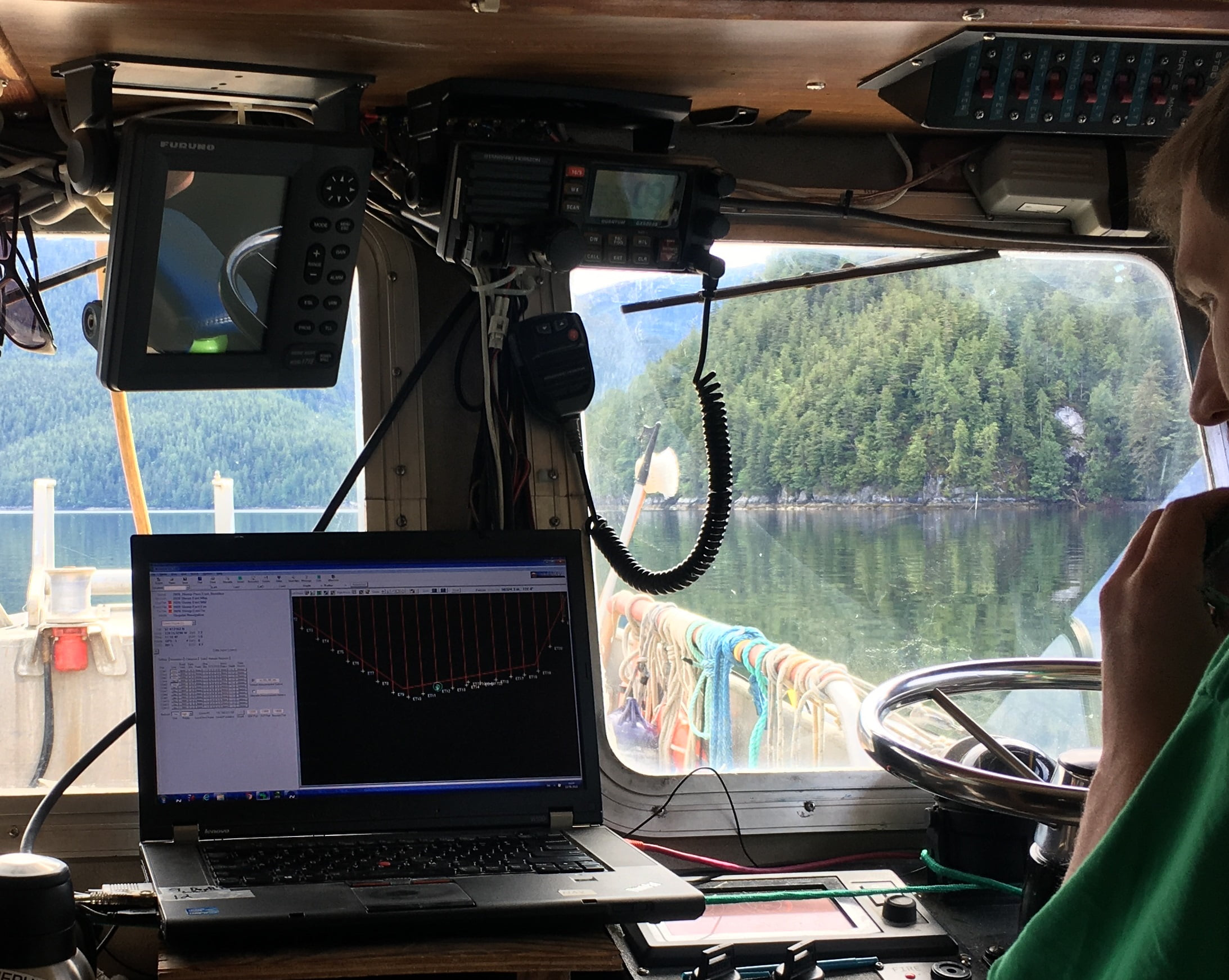Navigation Equipment
With cutting-edge devices for navigation both above and below water, Ocean Dynamics is able to provide a complete survey solution.
Data Processing
Post processing of the navigation data can be performed to clean the data and provide a best fit line of ROV positions. Final deliverables can be given as shape files for easy import into GIS software.
USBL Details and Theory
Ultra Short Base Line (USBL) is an underwater positioning system that uses a vessel mounted transceiver to detect the range and bearing to a target using acoustic signals. This range and bearing technique is based on two principles. The first is that an accurate range can be determined by knowing precisely the time taken for an acoustic signal to travel between the target and the transceiver and the speed at which the signal travelled (sound speed).
The second is that the bearing can be determined by knowing the discreet difference in phase between the reception of the signal at the multiple transducers present in the transceiver. This allows the USBL system to determine a time-phase difference for each transducer and therefore calculate the angle of the arriving signal. In addition to an acoustic transceiver and in-water transponders, a USBL system is also comprised of several other components, which includes attitude sensors for the accurate determination of vessel pitch, roll and heading (e.g. VRU and Gyrocompass), and for calibration purposes, accurate surface positioning systems, which would typically be a DGPS. The USBL system also features the vessel mounted hardware and software, from which the USBL is controlled, along with the associated cabling and all important deployment pole upon which the transceiver is mounted.
To determine the accuracy, we multiply the system calibration accuracy by the slant range. Slant range depends on the depth and the distance from the transceiver to the transponder. For example, if the ROV is 200m deep and is 20m away from the vessel then: Slant range is the square root of 200² + 20² = 200.1 USBL accuracy would be 200.1 x 0.5% = 1.00m accuracy. Remember that this accuracy also depends on a number physical and acoustic variables and can range somewhat throughout a dive or from dive to dive. In general, this system would deliver anywhere from 1m to 5m accuracy, depending on the depth. The deeper you go the less accurate the system is.


